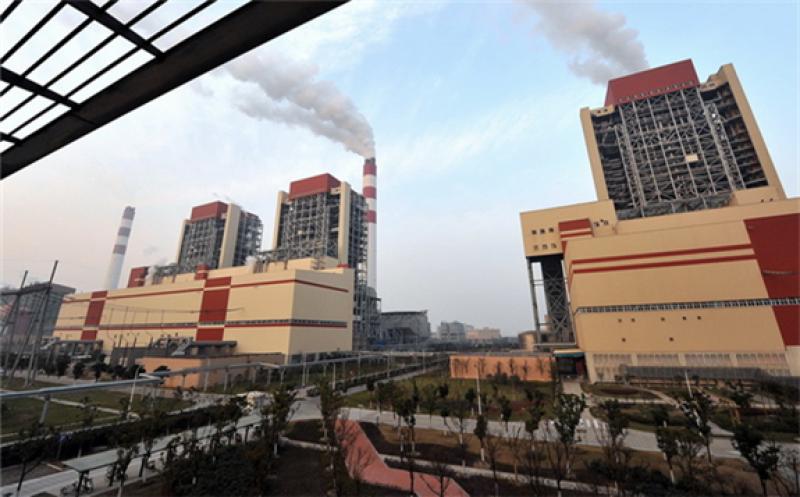China's emissions trading system (ETS) could help power sector emissions to peak before 2030 and reduce coal's share of the generation mix to 50pc or less by 2035 if it adopts more stringent benchmarks than it currently has, according to a report published by the International Energy Agency (IEA). Without tighter allocation benchmarks for coal-fired plants or the introduction of allowance auctions, the scheme could fail to encourage any significant coal-to-gas fuel switching.

In a report — The Role of China's ETS in Power Sector Decarbonisation — published on 13 April, the IEA examined the efficacy of China's ETS under various scenarios to assess the feasibility of the country's long-term climate goals as laid out by President Xi last year.
The IEA's outlook considered a no-carbon-pricing counterfactual scenario, an ETS scenario with free output-based allowance allocations and increasingly stringent benchmarks for coal, and an ETS auctioning scenario where emissions allowance auctioning is gradually introduced.
The report found that assuming an effective and evolving allowance price, Chinese power sector emissions could peak before 2030 if allowance allocation benchmarks for coal-fired units are gradually lowered, ensuring smooth implementation of the ETS. The IEA further suggested that introducing auctioning into the Chinese ETS would accelerate the process.
The IEA also said that coal's share of the generation mix would fall to 50pc by 2035 in the ETS scenario, but would decline to 40pc by 2035 in the ETS auctioning scenario, as allowance auctions "would strengthen the competitiveness of renewables-, nuclear- and gas-based technologies vis-a-vis coal-fired plants, leading to faster decommissioning of existing coal-fired units and fewer installations of new ones".
Coal accounted for more than 60pc of the generation mix in 2020.
ETS to improve coal efficiency, but fuel-switching limited
The Chinese ETS currently employs an output and rate-based method to allocate free allowances among power generators. The number of free carbon permits is based on each power unit's actual generation and a predetermined CO2 equivalent (CO2e) emissions-intensity benchmark specific to the plant's fuel, technology and size.
The Chinese ETS has four benchmark classifications which are defined for gas-fired units, unconventional coal-fired units, conventional coal-fired units smaller than 300MW and conventional coal-fired units bigger than 300MW. The benchmarking system ensures that cleaner coal units receive more free allowances.
While the benchmarking will encourage Chinese coal generators to improve their plant efficiency and therefore contribute to a reduction in overall emissions, the IEA said that incentives to switch from coal to gas or non-fossil sources would be limited. This is because low-emissions-intensity coal-fired units would still receive a surplus of free allowances by outperforming its applicable benchmark.
"The ETS would drive emissions reductions mainly by improving the efficiency of coal-fired power generation, particularly between 2020 and 2030, and by enlarging the deployment of carbon capture, utilisation and storage (CCUS) in the power sector from 2030," the report said.
However, "[a]s the benchmarks for coal- and gas-fired units are separate and China's ETS currently does not include non-fossil sources directly, entities covered by the ETS could receive surplus allowances for coal-fired units with relatively low emissions intensities but would not necessarily gain any revenue by switching from coal to gas or nuclear or renewables", the report added.
Furthermore, the current Chinese ETS could widen geographical disparities as regions with a higher share of high-efficiency coal units would benefit from the ETS, while those with less-efficient units would face additional costs.
Therefore, to make the carbon cost meaningful while incentivising structural power sector decarbonisation, the IEA suggests that China should gradually merge the benchmarks for all coal and gas plants and introduce allowance auctioning, followed by appropriate power market reforms and policies.
The IEA said that lowering benchmarks would be "crucial" for the ETS to effectively support China in meeting its climate goals. The average fleet efficiency will improve as older units are retired, so "[t]he benchmark trajectory should integrate such improvements and reduce the risk of over-allocation while continuing to provide further incentives to achieve the intended transition objectives", the report said.
In the IEA's scenario in which benchmarks are gradually reduced, "the allowance price would rise gradually from around CNY 100/t CO2 (USD 15/t CO2) in 2020 to CNY 360/t CO2 (USD 52/t CO2) by 2035".
The IEA also recommended introducing allowance auctioning, to target the highest-emitting sources of generation and encourage switching from coal to non-fossil and gas sources. In the IEA's auction scenario, "[a]uctions are assumed to be introduced in 2025, moderately reducing the share of freely allocated allowances in the system first by 10%; then by 30% in 2030; and by 50% in 2035."
The IEA forecasts that moderate auctioning would double gas-fired generation and increase wind and solar output by 10pc and over 40pc, respectively, by 2035. And by doing so, the IEA projects "in the ETS Auctioning Scenario, with the share of auctioning increasing after 2025 and gradually reaching 50pc in 2035… [that] auctioning could cut electricity system CO2e emissions to below the 2020 level by 2035".
President Xi declared a 2030 deadline for a peak in power sector emissions and a 2060 target for carbon emissions neutrality before 2060 for China in September last year at the UN General Assembly.